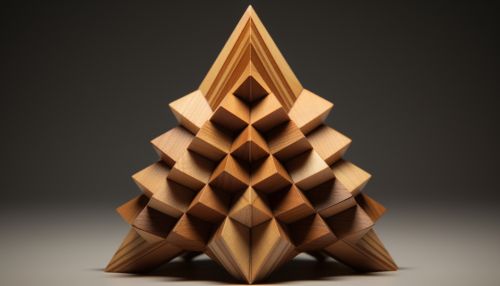Octahedron
Definition
An octahedron is one of the five Platonic solids. It is a polyhedron with eight faces, hence the prefix 'octa'. The faces of an octahedron are all equilateral triangles. It has 12 edges and 6 vertices. The dual polyhedron of an octahedron is a cube.


Geometry
The geometry of an octahedron is fascinating and complex. Each face of an octahedron is an equilateral triangle, and the angles between any two adjacent faces are 90 degrees. This gives the octahedron its distinctive, symmetrical shape. The interior angle at each vertex of an octahedron is 109.47 degrees.
The volume of an octahedron can be calculated using the formula V = (sqrt(2)/3) * a^3, where a is the length of an edge. The surface area can be calculated using the formula A = 2 * sqrt(3) * a^2.
Symmetry
An octahedron has several lines of symmetry. It has three axes of two-fold rotational symmetry and four axes of three-fold rotational symmetry. This means that the octahedron can be rotated around these axes and still look the same. It also has nine planes of symmetry.
In Nature and Culture
Octahedra appear in nature and culture in various forms. For example, the mineral diamond often forms octahedral crystals. In architecture, octahedra are used in the design of certain structures due to their strength and symmetry. In art, octahedra are often used for their aesthetic appeal and symbolic significance.
In Mathematics and Science
In mathematics, octahedra are studied in the field of geometry, particularly in the study of polyhedra and higher-dimensional analogues. In science, octahedra are used in the study of crystals and crystallography. They also appear in the study of molecular and atomic structures in chemistry.
